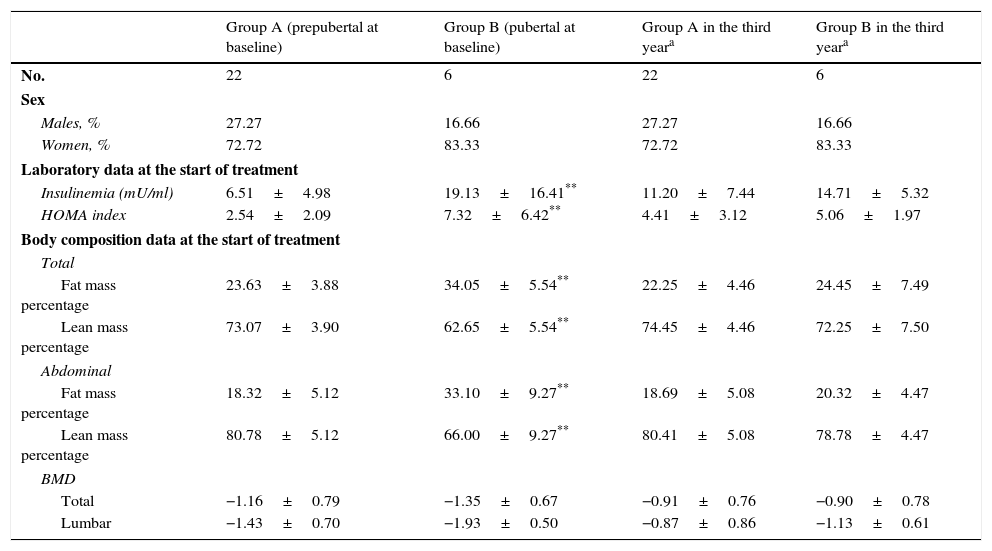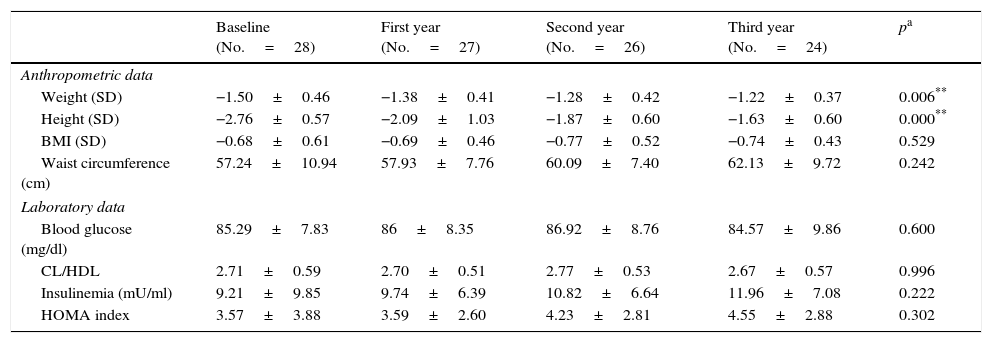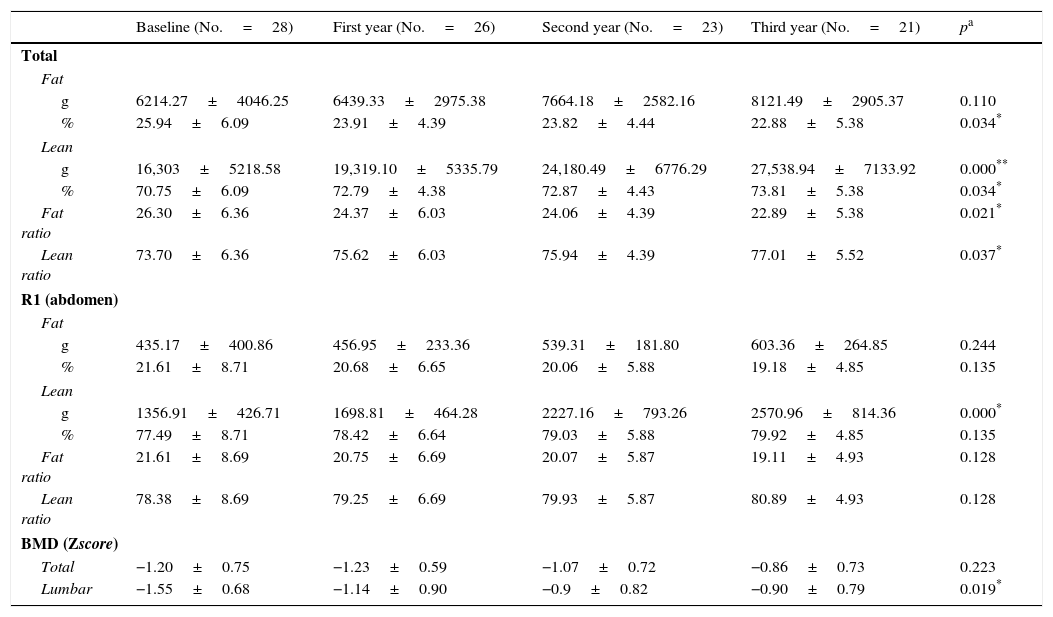Small for gestational age (SGA) children are at increased risk of metabolic syndrome. Our objective is to evaluate changes in body composition produced by growth hormone (GH) treatment.
Patients and methodA group of 28 SGA children without catch-up growth and undergoing treatment with GH was selected for evaluation. Over the course of 3 years from the beginning of the treatment with GH, the children's body composition variables (bone mineral density [BMD], fat and lean body mass proportion) were evaluated annually with dual-energy X-ray absorptiometry. A study of correlation between metabolic and body composition variables was also made.
ResultsTreatment with GH produces a reduction in fat mass proportion in relation to lean body mass, decreasing from 25.94±6.09% to 22.88±5.38% (P=.034). In the abdominal regions we observe an increase in lean mass, from 1356.91±426.71 to 2570.96±814.36g (P=.000) and a tendency for visceral fat deposits to decrease. BMD in lumbar vertebrae improved from −1.55±0.68 to −0.90±0.79Z (P=.019).
ConclusionsTreatment with GH produces changes in body composition, improving BMD and increasing the proportion of lean body mass with a reduction in fat mass. If these changes persisted into adulthood, they may cause a reduction in the metabolic and cardiovascular risk in this group of patients.
Los niños pequeños para la edad gestacional (PEG) constituyen un grupo de riesgo para desarrollar síndrome metabólico. El objetivo de este estudio es evaluar las modificaciones que produce el tratamiento con growth hormone (GH, «hormona de crecimiento») en la composición corporal.
Pacientes y métodoSe analizan diversas variables antropométricas y de riesgo metabólico en una muestra de 28 niños PEG sin crecimiento recuperador. De forma anual desde el inicio del tratamiento con GH y durante 3 años se miden, mediante densitometría, diferentes variables de composición corporal: densidad mineral ósea (DMO), proporción de masa magra y masa grasa corporal y en la región abdominal. Se ha realizado un estudio de correlación entre variables metabólicas y de composición corporal.
ResultadosEl tratamiento con GH produce una disminución de la proporción de masa grasa con respecto a la masa magra en el cuerpo entero, con una disminución del porcentaje de grasa total desde 25,94±6,09 hasta 22,88±5,38% (p=0,034). En la región abdominal se observa un aumento de la masa magra desde 1.356,91±426,71 hasta 2.570,96±814,36g (p=0,000) y una tendencia a disminuir el depósito de grasa visceral. La DMO en la región lumbar mejora desde −1,55±0,68 hasta −0,90±0,79Z (p=0,019).
ConclusionesEl tratamiento con GH produce cambios en la composición corporal con mejoras en la DMO y un aumento de la masa magra a expensas de la masa grasa. Estas modificaciones, de persistir en la edad adulta, podrían disminuir el riesgo metabólico y cardiovascular de estos pacientes.













